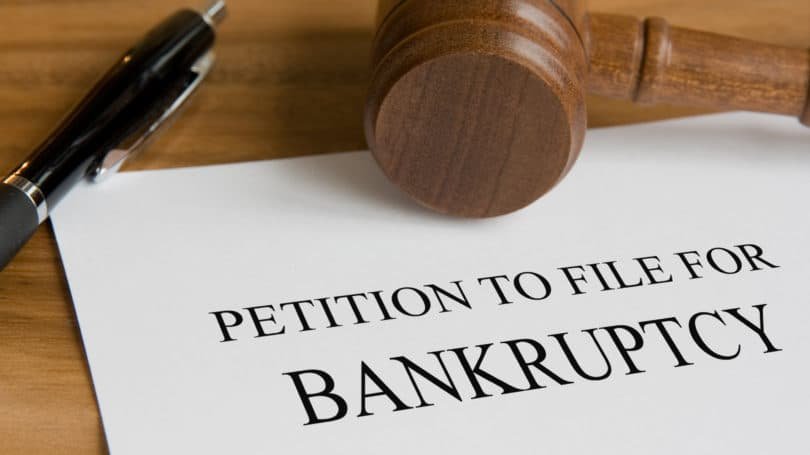Things don’t always go according plan. It’s possible you took on debt which was beyond your financial ability to pay each month. It’s time to find out how to improve your financial situation.
A valuable skill for small-business owners as well as consumers is knowing when to file bankruptcy. Find out more about bankruptcy and whether it’s right for you.
What Is Bankruptcy and
People who have too many debts may file bankruptcy. They will have to sign a federal petition detailing their outstanding debts or financial obligations before asking their creditors to help them resolve the debt.
What Kinds of Bankruptcy are There?
Many types of bankruptcy are available to deal with excessive debt. These are the U.S. bankruptcy chapters that you can consider if debts are not being paid.
Chapter 7: Individual Liquidation
Chapter 7 will be the most popular chapter. This is because it allows people to declare bankruptcy for personal debt. A trustee is appointed by the federal court to assist an individual in selling their property to repay creditors and lenders. You can claim exempt property from Chapter 7 bankruptcy. These include your car or pension or your household equity.
Chapter 11 – Reorganization Bankruptcy
Small-business owners may have the option of filing Chapter 11 bankruptcy in order to reorganize and pay off their debts, assets, and assets. A examiner will assist you with the process if the amount of these factors exceeds $5,000,000.
This can be beneficial for business owners, as it allows the company to stay open and functional while restructuring happens. If the debtor refuses to offer the idea, creditors may propose Chapter 11 bankruptcy.
Chapter13: Asset Maintenance & Repayment Plan
Individuals who file Chapter 13 bankruptcy are allowed to keep their assets. However, they must repay their debts within three or five years after the court approves their plan. You don’t have to liquidate assets if you do not make any missed or skipped payments. The majority of those who don’t get bankruptcy approval are people without reliable income.
When is it Time to File for Bankruptcy in Individual
Before you file for bankruptcy, it is essential that you negotiate with your creditors or debtors. If there is a way that you can make long-term repayments and eventually pay down your debt more efficiently, creditors will still get their money.
Sometimes debtors will negotiate. But they may not do so if they don’t believe there is a viable option due to your financial history.
If you find that negotiations are not possible and you are in danger of losing your house, or any other valuable assets, it may be time for you to file bankruptcy. For the type of bankruptcy you want, it is a good idea to attend a credit counseling session.
A counselor will assess your assets, liabilities, and recommend the best solution. Federal credit counseling agencies can help you find these experts.
There are times when you might be concerned that your current net worth or property won’t suffice to pay off your debts. If that is the case your senior-most credit provider will develop a financial solution plan to resolve any remaining debts along with your credit counselor. Your minor lenders will make any necessary changes and comply with the senior-most decision if they design the plan in good Faith.
When to File Bankruptcy for a Business
Debtors who don’t negotiate with small businesses about their loans could file for bankruptcy. This would normally mean a Chapter 11 bankruptcy case. It has some advantages and disadvantages for small businesses.
This type of bankruptcy is available to you if your creditors and debtors have not met to discuss new contract terms. Instead, all parties would meet in federal court to discuss alternative terms such as longer payment terms for equipment or real estate.
Small-business owners don’t need to liquidate companies or assets immediately to pay the debt. They can continue to operate because Chapter 11 prioritises repayment plans approved and prioritized by federal judges. After the parties reach an agreement, a trustee is appointed to act as a facilitator for the payment.
Because bankruptcy can be costly and slow, many small-business owners will hesitate to file. Depending on what the court schedule is and how easy debtors are to agree to payment plans you could pay $19 738 per filing and attorney fee.
Also, you will need to make the initial payment within the first few weeks of your plan agreement. After paying legal fees, this can be a difficult time for your business to continue its daily operations.
How do I file for bankruptcy
Filing bankruptcy is not an easy process. There are many steps involved. Before you take any final decisions about the bankruptcy process, make sure to understand it.
1. Examine Your Options
Sometimes bankruptcy is not necessary. Unpaid taxes and student loans can be discharged to provide relief, while you search for consolidation or settlement. To make the best choice, you’ll need your credit report and financial history .
2. Choose the Bankruptcy Type
You will need to choose one of Chapters 7, 11, 13 or 14 if you decide bankruptcy is right. You can narrow your choices by selecting whether you are filing for individual or corporate bankruptcy. After that, you will be able to decide based upon your assets’ values, outstanding debt, ongoing income, and other factors.
3. You can find an attorney by making a decision
The American Bar Association has a list of attorneys that are available to help with bankruptcy filings. If you cannot afford legal help but need representation, free services and legal aid clinics can be of assistance.
Pro se, or the option to represent oneself, is also known. You won’t be required to pay an attorney fee, which will help you save a lot on your filing costs. However, you may not be able to get the debt relief which you desire. A recent study showed less then half of cases ended in debt discharge, and 93.9% of represented situations did.
4. A Credit Counseling Course
All people filing bankruptcy will need credit counseling. It helps people evaluate all their options in order to decide which option is best, whether that be bankruptcy or other forms of debt relief. If your class is completed more than 180 day before you file, you will have to retake the class closer to your formal filing date.
5. Complete the Counseling and Legal Forms
After you meet with credit counselors, and have completed your course successfully, you’ll need to fill out the necessary forms. Many steps are involved in any bankruptcy. Prepare for it to take time. The forms include financial statements, fees and other relevant information. If you wish to be represented, your lawyer is available.
6. Pay fees and file forms
You will also be charged fees for filing paperwork. There are fees for filing, administration work, and surcharges if you have a trustee overseeing the arrangement of payment plans with your debtors. This fee can be waived for those whose income is less than 150% of the poverty threshold.
7. Negotiate with Creditors
Your creditors will meet with your after you have paid all fees and filed all documentation. They will evaluate your situation and decide how to repay your outstanding debts. The meeting will take place under oath so any agreements reached here will be legally binding.
8. Take part in Debtor Education classes
You must complete post-filing education classes if your lenders discharge your debts. The lessons and tests will prove that you’ve learned the best way to manage your finances. You will need the final certificate and pay the class fee in order to complete your bankruptcy.
Life after Filing
What is your life like after you file bankruptcy? It all depends upon how you file bankruptcy and what your situation is.
Chapter 7 bankruptcyes are kept on credit records for ten years after the parties have paid off any outstanding debt. Chapter 13 bankruptcy on the other side will not be visible for seven year.
No matter how you file, credit scores will also decrease. It could make it difficult, or impossible, to get money from investors and insurance companies for your business expansion or recovery from an emergency.
In some cases, you might have to take on the entire debt yourself for many years if your bankruptcy leaves you with significant debt. There are certain limitations to the number of bankruptcy chapters that can be filed.
Insolvency – Debts Not Counted
If you owe money not eligible for bankruptcy filings, you may not need to do so. These are the types of debts which federal courts will not accept in bankruptcy filings.
Outstanding utility bills
Personal
Credit card debt
Medical bills
Payday Loans
Past-due rent bills
Talking to a lawyer or credit counselor can help you decide if your debts are eligible for bankruptcy.
Know When You Should File for Bankruptcy
Understanding when you should file for bankruptcy is crucial to managing your finances . It can make your life easier or less stressful. Consult an expert to discuss the best ways to manage your finances while maintaining your personal and/or professional life.

